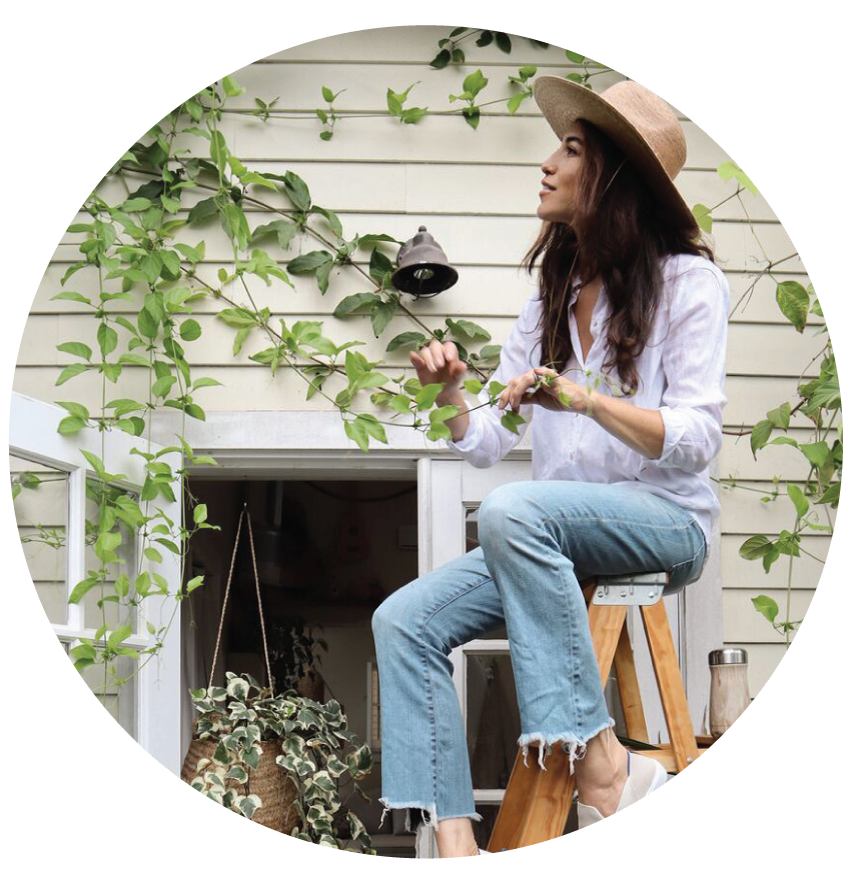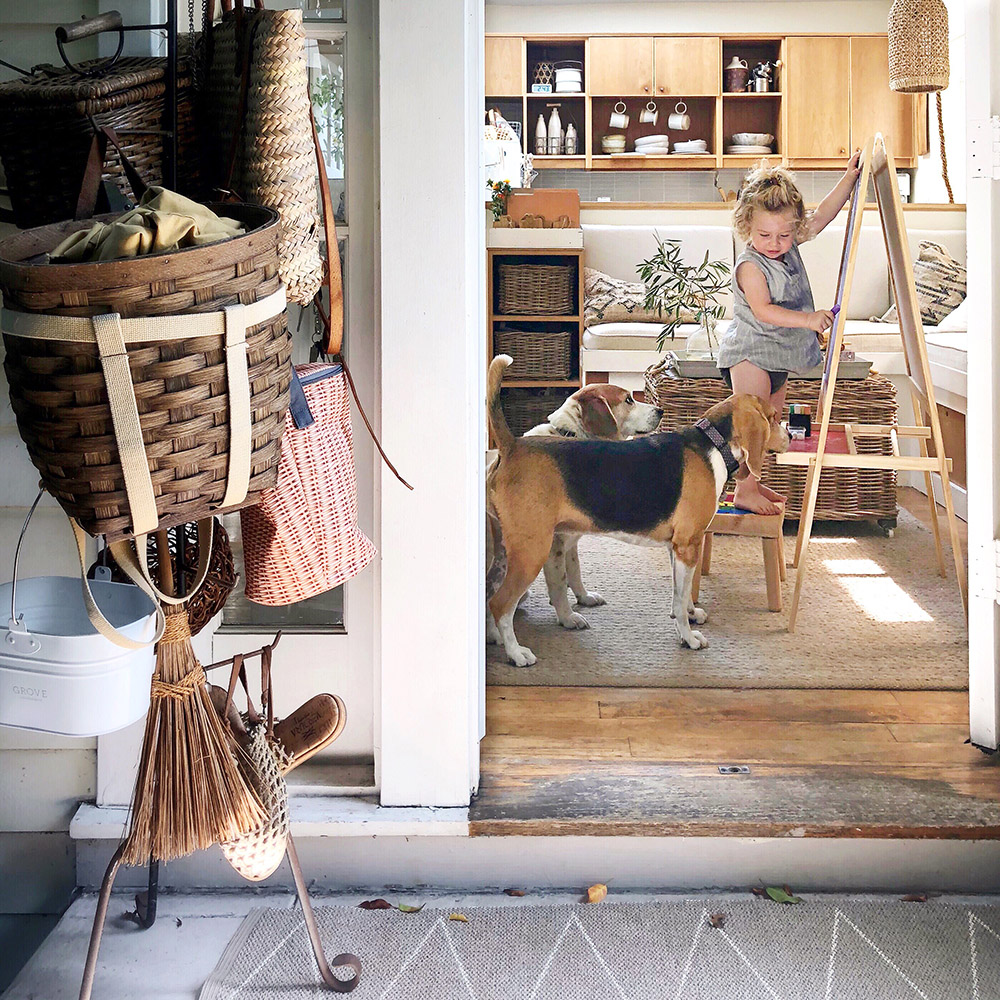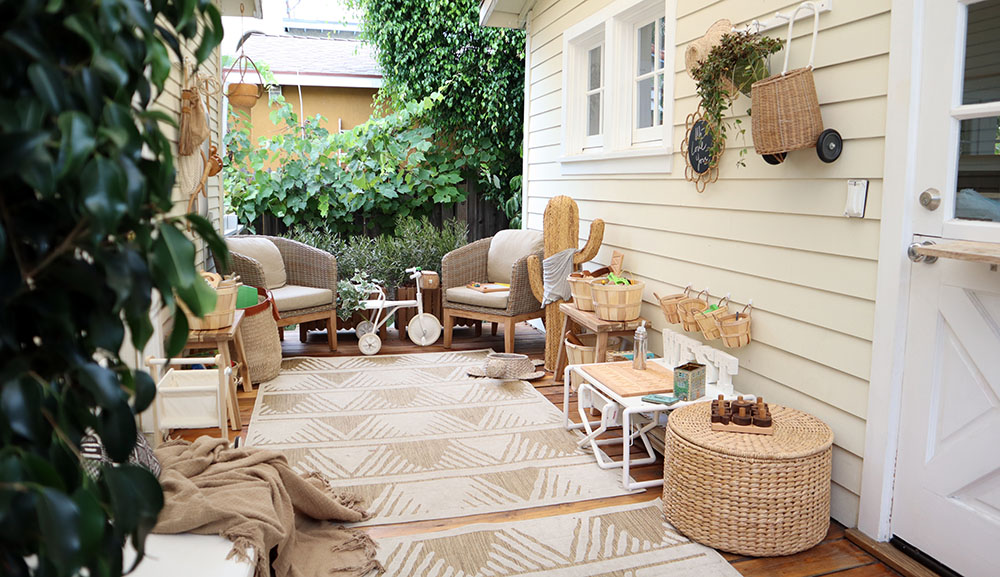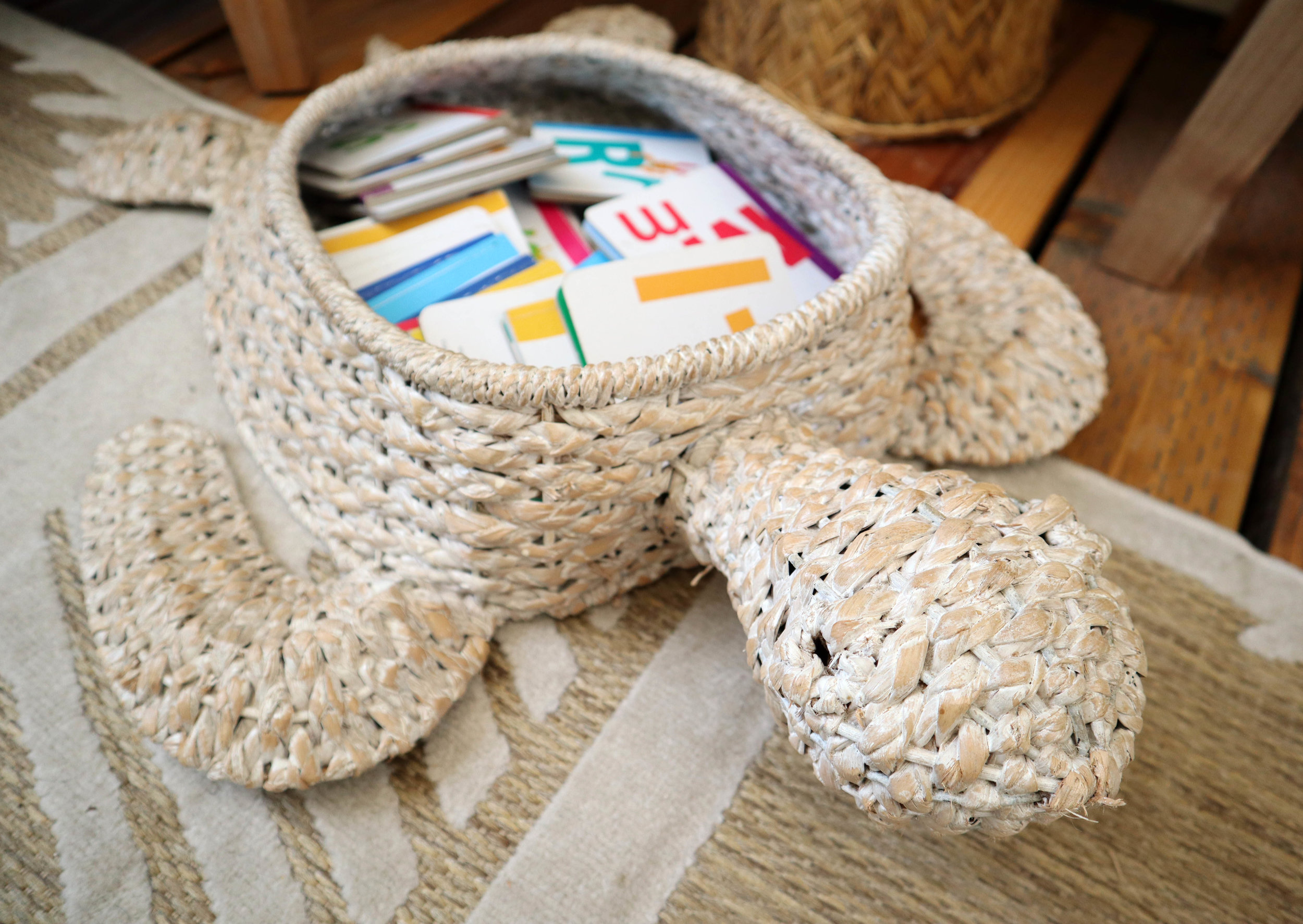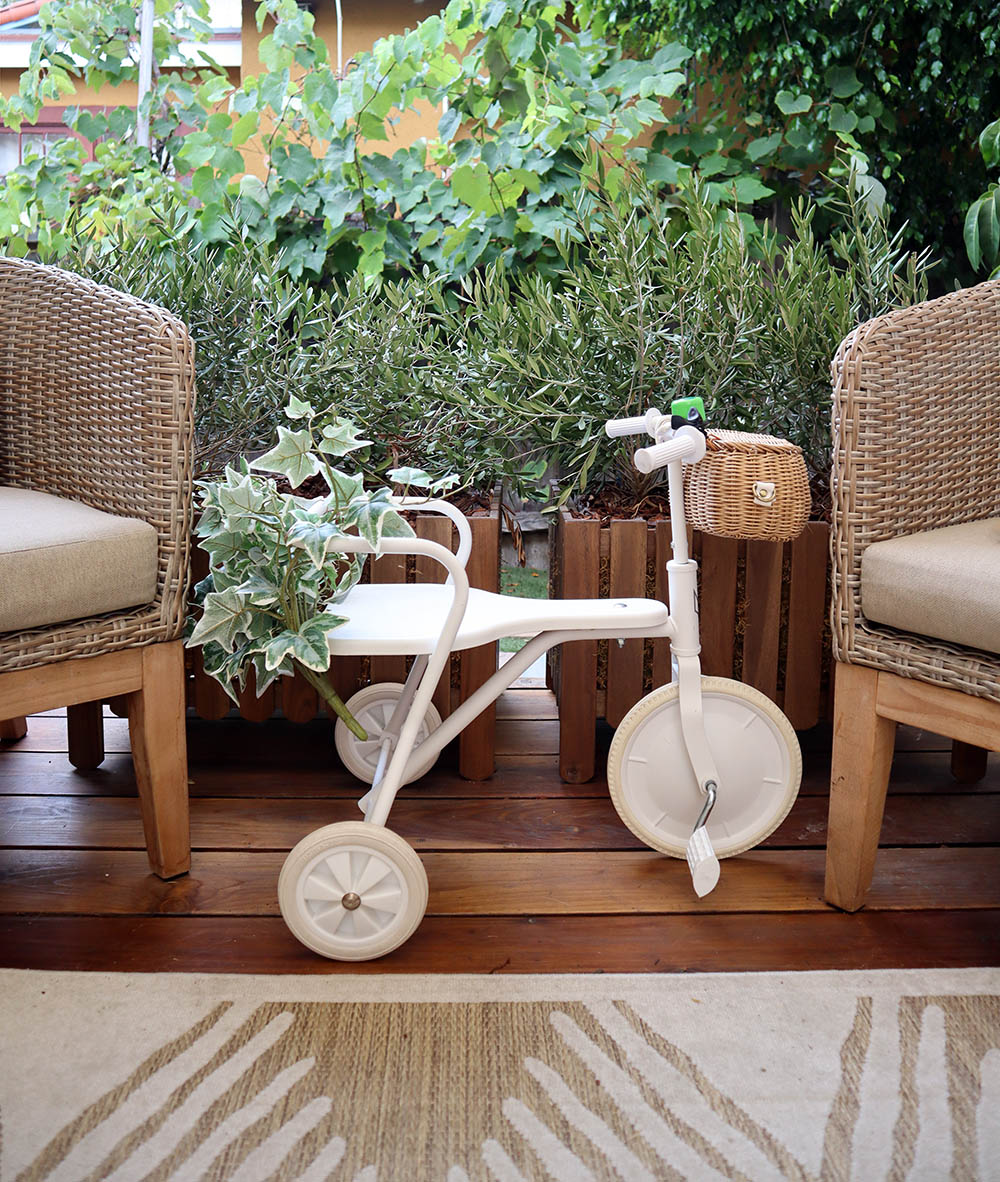Updates to the Outdoor Playroom
When I was pregnant with West 2 years ago, one of the comments I heard at least once per day was something along the lines of: "When are you going to move? You'll need a bigger house." I tried to take a deep breath every time such words were slung my way, and remind myself that most people were trying in their own way to help.
The thing is, folks here in LA and all around the globe raise children in all manner of structures, and much of the population doesn't have the financial luxury of expanding their living quarters if and when their family grows. Adam and I knew it was possible to stay in our Cottage, which we genuinely wanted to do. We also looked forward to the process of adapting our space to suit our needs whenever necessary. Most of the time when I shared this positive outlook with others, they seemed to write it off as me attempting to preserve my blogging business. (Sigh. No.) That wasn't the case either. People change. Situations evolve. And I expect to be excited for the next adventure after our Tiny Canal Cottage when the time comes, and I hope that the readers of this site are too.
Rather than go for bigger, newer and "better," Adam and I opted to work with what we have: an amazing SoCal climate, and an adorable little outdoor space that cups our cottage.
When West was about a year and a half old, we updated our shared porch from a dining space into a playroom, and that's where Adam and our son spend a significant portion of the day, as West is not yet in school. Our neighbor in the front house almost never used the deck, as he has his own private garden space on the opposite side of his unit, so he kindly gave us the reins to the sliver of space connecting our homes. We covered the 8' x 20' stretch with a sun canopy, outfitted it with some practical patio furnishings, and accessorized the space with toys and games for West.
If we didn't have the deck (or if the climate here was different), we still wouldn't have moved. But I probably would've rented a temporary desk part-time at an office-share nearby.
When it rains (which is rare, but it happens), we leave the furniture outside and just tote or roll the containers of toys and games inside and stagger them around the interior of the house. Anything smaller that's water-resistant stays outdoors and gets tucked under the coverage of the eaves.
I receive so many question about toy storage. It's oftentimes marketed as high-end (and thus absurdly expensive), or it's less than pleasing to the eye and manufactured from plastics or other similarly environmentally damaging materials.
My advice to parents in small spaces is usually to explore items they already have that can be repurposed into toy storage, such as luggage, market baskets, canvas bags, boot boxes (turn them inside-out and re-glue or tape them to hide logos), dresser drawers (if they're safe for children to access), and low rolling carts. As always, please choose wisely and safely with your kid(s) and space in mind. What works well for one child might not do for the next, and what functions well in one home might be ridiculous in another.
Recently we've been using apple baskets as toy storage. They are inexpensive, easy to mix-and-match, and contain no plastic. Plus they dry easily when splashed lightly with water. (We aren't worried about the raw construction of the baskets, as West handles them just fine. However, they might be too rough for many children.)
When our son outgrows some toys, books and games, we'll keep them on a bit longer in case we decide to try for another child. Other items will be handed over to friends, donated to local non-profits, and given to a nearby library and/or school. Then the baskets can be repurposed in endless ways.
If we wanted or needed to, we could live with far fewer goods in fewer inches. Anyone can. And many must. (I think perhaps many folks would do well to keep that in mind.) People make it work in every sort of environment. Don't be discouraged by your small space, parents. Work with what you've got. (And enjoy it!)
